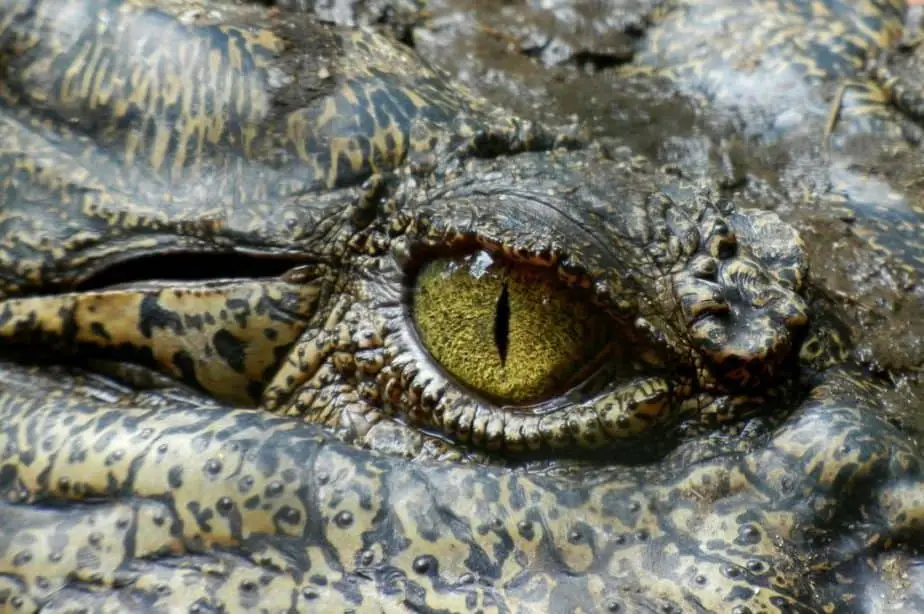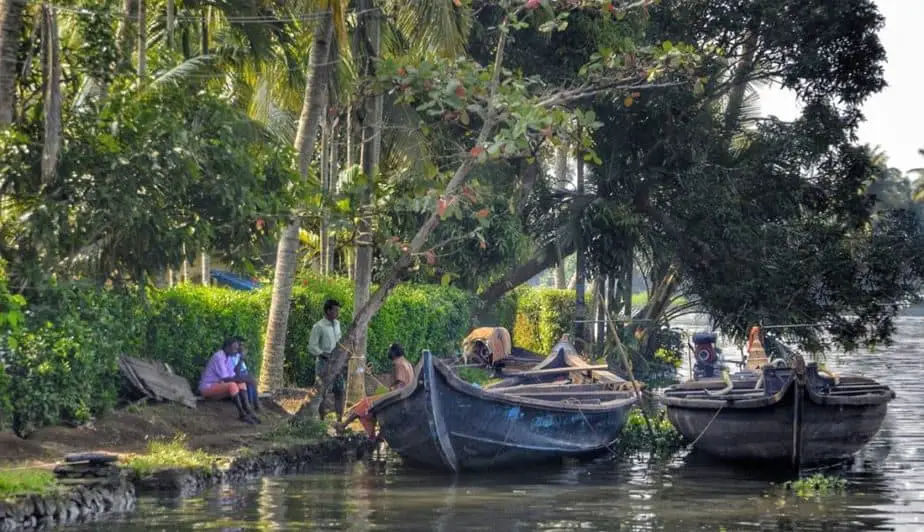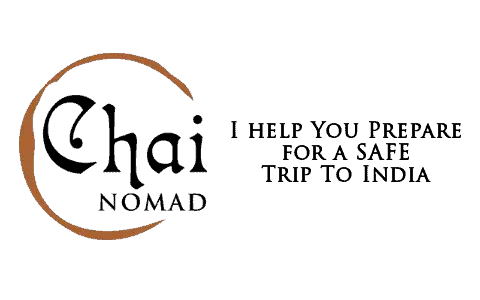Kerala’s Backwaters are one of the most popular tourist destinations in India, and if you’re like me, you are excited to take a houseboat trip along the peaceful waterways. However, you may also be nervous about staying safe and wondering, are there dangerous animals like crocodiles in the Backwaters?
There is no evidence to suggest there are crocodiles in Kerala’s Backwaters. There have been no sightings or recorded crocodile attacks on humans in the area. Although there have been a dozen mugger crocodile attacks in the state of Kerala around 2001.
If you were worried about deadly crocodiles on your houseboat trip in Kerala, you can rest easy that you will be safe. However, there have been a dozen crocodile attacks in the state of Kerala in the last few years.
There are also five poisonous snakes that live in the state, so if you’re planning a trip to Kerala’s Backwaters, this article will help you be prepared to have a wonderful vacation.
Are There Crocodiles in Kerala?

Mugger crocodiles live in the state of Kerala, however, they are NOT usually aggressive and are NOT known to attack humans.
South of the Backwaters by about 55 miles, there is a Crocodile Rehabilitation and Research Centre in Neyyar. Here the staff study, breed, and raise crocodiles. The crocodiles here can be viewed by the public and it’s a popular tourist destination.
However, there have also been a dozen crocodile attacks in the reservoir near the Centre around 2001.
Around that time, there was a debate about whether to conserve the crocodiles or not, when a 57-year-old woman was killed in 2001, according to the Gulf News.
In Kerala’s fifth-largest river, the Chalakudy River, a mugger crocodile attack was recorded in 2012.
Although according to the online research project, CrocBite, there have been 0 recorded crocodile attacks in Kerala. There were 52 crocodile attacks across India though in 2019.
Given that Kerala’s Backwaters are huge… The waterways span 560 miles (900 km) there are very few crocodile attacks, so crocodiles present an extremely low risk to tourists.
There may have been a lot of crocodiles in the Backwaters 100 years ago though.
Saltwater crocodiles, the largest living reptiles, used to live in the area and were a serious threat to humans. They are still found on India’s East Coast and the Andaman Islands, as well as in other parts of Asia.
In the 1940s, the saltwater crocodiles territory spread as far northwest as Kochi in Kerala. But given the fear of crocodiles, they were subsequently hunted and driven into extinction in Kerala.
The crocodiles also lived in the mangroves in Kerala, which were destroyed as the human population grew in the state.
Where Can You See Crocodiles in Kerala?
If you’re wanting to see crocodiles though, you can check them out south of the Backwaters…
Neyyar Wildlife Sanctuary
The Neyyar Wildlife Sanctuary has 20 mugger crocodiles, as well as other fauna. There are 176 species of birds, 30 species of reptiles, 40 types of fish, and 17 types of amphibians.
There are also a number of elephants for feeding and even riding.
One weird fact about the sanctuary is that it used to have Steve Irwin’s name. However, after his untimely death, his family sued the park to remove any association with the famed crocodile hunter.
Are There Snakes in Kerala’s Backwaters?

While there aren’t crocodiles in Kerala’s Backwaters, there have been 55 snake bites in Kerala in the last 5 years. There are 5 poisonous snakes that are found in Kerala:
- Indian Cobra
- King Cobra
- Russel’s Viper
- Saw-scaled Viper
- Krait
Only the Indian Cobras is known for swimming and living near marshes. Yet they usually live near farms and in forests. These snakes eat frogs, lizards, mice, rats and other small animals.
Russel’s Viper is the snake that is responsible for the most deaths in India. But it usually feeds on rats and mice, so is near farms and homes. They avoid humid environments like the Backwaters.
King Cobra’s live far from humans in deep thick forests, so are not a risk to humans, even though they grow to 15 feet long with venom that is a neurotoxin and quickly causes death.
Krait is another common snake living near homes and farms, where they can eat rodents. They also eat frogs or other snakes. The venom is also a neurotoxin.
Saw-Scaled Vipers won’t be near the Backwaters because they prefer dry regions. Their venom is a haemotoxin.
There is only a small chance of a bite near Kerala’s Backwaters, however, the risk increases if there is a flood. In a recent flood, there were 56 snake bites in Kerala in 6 days.
There are also 19 mildly poisonous and non-poisonous snakes in Kerala, so it is not uncommon to see them swimming in the water or in the marshes near the Backwaters.
Is It Safe To Swim in Kerala’s Backwaters?

Crocodiles or snakes present only a small risk if you’re considering swimming in Kerala’s Backwaters. The main risk you’d face is the pollution levels of the waters.
Vembanad Lake is the largest lake in the center of Kerala’s Backwaters and it is heavily polluted, according to the Fauna Journal.
- 187 tons of solid waste reach the lake
- 260,000 million liters of liquid waste reach the lake from the industrial areas of Kerala
- Each day 230,160 liters of wastewater are dumped in the lake
- Faecal coliform count is 20 times higher than safe levels. It can reach 1800/100 ml. Swimming beaches should NOT exceed 88/100 ml.
In another study, almost half of the water sources in Kerala were found to be at least “partly polluted.” The study analyzed 3606 water sources across the state for pollution and the results were not good:
- 53% of the water sources had solid waste
- 23% of the water sources had household waste
- 17% of the water sources had liquid waste
- 8% of the water sources had “encroachment” or were too near utilities, roads, railways, and other developments
- 27% of the water sources were completely polluted
- 46% of the water sources were partly polluted
- 27% of the water sources were not polluted
Therefore, if you’re thinking of swimming on your trip in Kerala’s Backwaters, it is NOT advised.
Is It Safe to Houseboat in Kerala’s Backwaters?

Given the risks mentioned above, it is safe to hire a houseboat trip in Kerala’s Backwaters. In fact, Kerala is one of the “50 Places of a Lifetime,” according to National Geographic Traveler.
There are over 1,200 houseboats throughout the waterways, yet over 500 are unregistered. So to ensure you have the safest experience, pick a respected houseboat company and ask if they are registered.
There have been houseboat accidents reported such as collisions, a fire in 2012, and one sank in February 2020.
However, 180,000 tourists venture to Kerala’s Backwaters each year, so it is expected that there will be some unfortunate incidents. Considering the amount of traffic, the chances of injury are very low.
I went on a non-motorized boat trip in Kerala recently, and it was a few hours of listening to birds chirp and waves lap against the hull. Two strong men used 20-foot poles to push us down the river and through some lush canals. The palm trees and foliage sometimes brushed the sides of our vessel as our tour guide explained the rich history of the area.
It was a wonderful trip and I’m looking forward to going back.
Summary:
There is very little chance you will see crocodiles in Kerala and a very good chance you will have a great trip on the Backwaters. Next time I’m in Kerala I plan to do a houseboat trip for a few days, so I can soak up the peace and quiet. Seeing the Kerala Backwaters is highly recommended.
If you’re planning a trip to Kerala, you will probably need some mosquito repellent, so in this article, I share how to choose the best mosquito repellent India in 3 minutes.
Related Articles You May Enjoy:


